Article is updated 30.3.2022! Davinci Resolve stuff updated
Sharing media between video and audio is a technical challenge, especially if you are using Logic Pro X. The good news is it can be done with most NLE’s. It will not be perfect, it’s not easy, you might have to do workarounds and you can never be 100% sure it will work in the same way every time, but it’s doable.
Two common formats for this is OMF (Open Media Framework) and the newer AAF (Advanced Authoring Format). They have both been developed by Avid so this is probably one of the reasons Pro Tools can handle these formats better than Logic, but Logic can import both OMF and AAF as well as XML, however it might not work in the way we would like it to.
The 4 most popular NLE’s today are:
Adobe Premiere Pro
Apple Final Cut Pro X
BlackMagic’s DaVinci Resolve
Avid Media Composer
So it makes sense to have a good understanding about the workflow between all these NLE’s and Logic Pro X.
Imagine a situation where you as the sound designer are using Logic Pro X and you have been hired to do the sound for a short film. You are not sure what NLE the editor is using but it’s probably one of those 4 popular ones. To be able to skip confusion and frustration between you and the editor, you want to have a solution ready when it’s time to export from NLE to DAW. Especially important when you are working with a non-standard audio post DAW like Logic.
What you need from the picture editor
Picture locked reference video with embedded audio in Apple ProRes 422 Proxy 720p/1080p format.
Picture lock does not mean “mostly picture locked”. It’s relatively easy to drop some frames in a video edit, but in the audio world with the importance of sound flows, to re-edit and re-mix can be anything from a light headache to almost impossible, especially in Logic where you cannot make a reconform. Make sure the picture is truly locked before starting with the sound. Truly 100% locked. Timing that is, if a picture gets changed later for another similar picture, that can be ok as long as it does not change the overall timing.
Why Apple ProRes 422 Proxy 720p or 1080p? The common H.264/mp4 format works in Logic but uses more CPU, can cause picture latency (usually 1-2 frames off) and is not as pixel-accurate. Proxy and 720p makes the video file size a lot smaller and with more than good enough quality for most sound design. You can do 1080p if you have a more powerful computer and you feel you do better work with a more high quality image. I do all my work on a Macbook Pro 14″ M1 Max 10-core CPU 32 GB RAM laptop and it works great.
Make sure the reference audio is embedded in the video file.
Head pop, tail pop and timecode burn-in.
The timecode burn-in is good to have as a reference point when discussing edit points with the team.
“Everything was good but that weird bird @ 01:19:24:02 sounds too strange”
The burn-in should not be in the way of critical visual edit points. Somewhere in the lower thirds is probably good.
The pop / 2-pop / sync pop / head and tail pop is a 1 frame long 1 kHz tone placed exactly 2 seconds before and after the film. The head-pop is used to check sync, and the tail pop is mainly used to check for drift.
The FFOA (First Frame Of Action = first frame the audience sees) usually starts at SMPTE 01:00:00:00 which means the head-pop should be at timecode 00:59:58:00.
Isolated location sound recordings and original music files.
A folder with all original location sound recordings and a sound report from the PSM (Production Sound Mixer / location sound recordist) is helpful when looking for alternative takes.
A folder with all the original music files can be important if the music needs to be edited. The OMF/AAF handles is not enough for this.
OMF, AAF, XML or stem export.
OMF, AAF or XML export is the most efficient workflow between picture and sound. You get all the sound files located at the correct time on your timeline on the right tracks with correct naming and other metadata intact in the same organization as the editor’s timeline and there’s extra handles for cross-fading. At least this is how we want it to be, in the so called perfect world which we might not have using Logic.
Stem export should only be an alternative for really simple stuff.
Let’s look at the 4 NLE’s and their workflows with Logic:
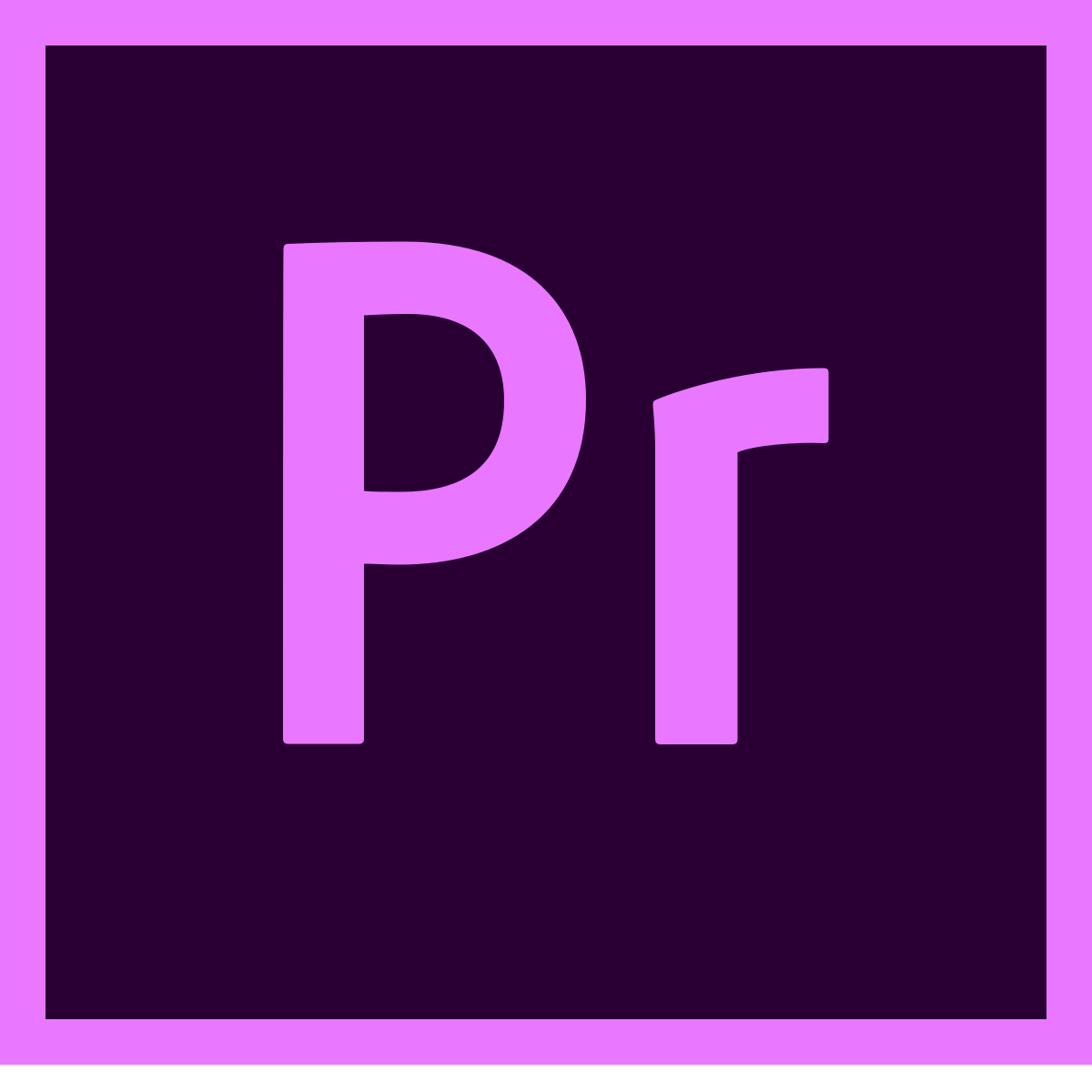
Premiere Pro -> Logic Pro X
OMF with separate audio files is the only method that works directly with Logic.
AAF does not work.
Use exactly these settings when exporting an OMF from Premiere:
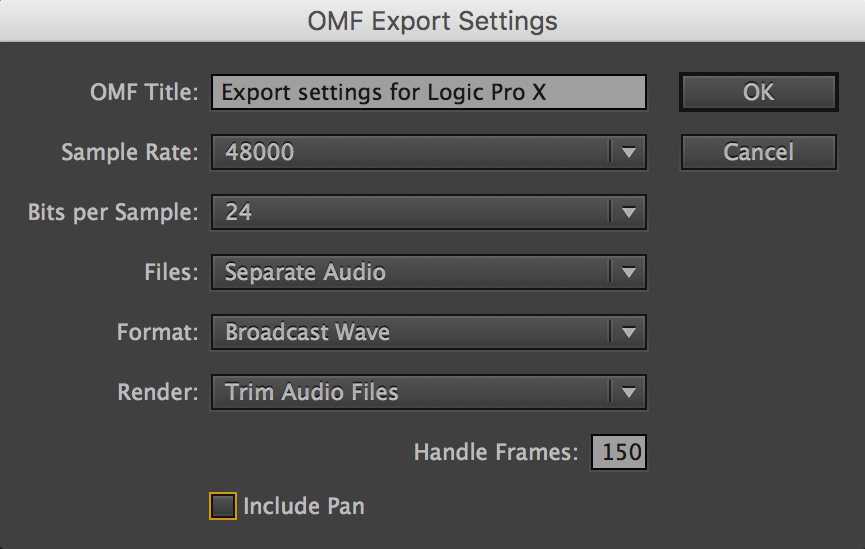
Frame handles can be anything from 5-10 seconds, in this case I have 6 seconds (150 frames in a 25 FPS project = 6 seconds)
One of the downsides of the older OMF comparing to AAF, is the broadcast wav files in the Audio Files folder gets these new weird names, however the region names and timecode metadata is unchanged!
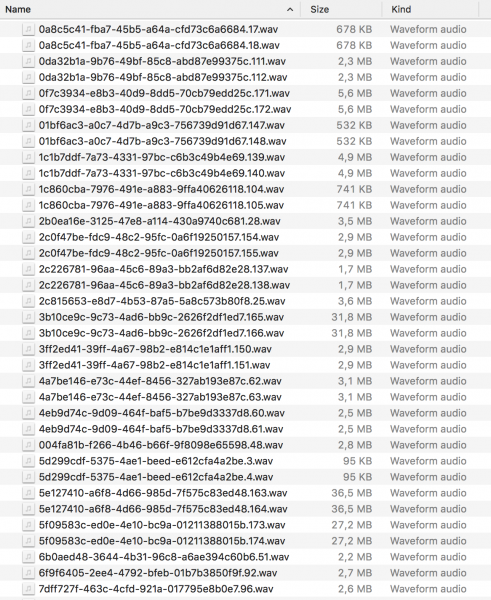
In Logic there’s no Import OMF visible option, they removed it in version X, but the functionality is still there! Go to File -> Import -> Other or shortcut [cmd + I] and choose the OMF file.
Logic cannot open an AAF directly from Premiere. If you for some reason need more metadata from Premiere, then one workaround is to export an AAF from Premiere, open it in Pro Tools (or any DAW that works with both Premiere and Logic as an “AAF middle man” maybe Nuendo or Reaper?) and from there export a new AAF. But there is still no guarantee this will work properly, so I recommend to just stick with the OMF.
Final Cut Pro X -> Logic Pro X
You would think this workflow must be a stable full of features in the same way Media Composer and Pro Tools work with each other. Ironically this workflow seems to be very unstable and random. Next up 3 situations:
Situation 1 – You are both the picture and sound editor and have nerves to deal with unstable conversions
You are both the picture and sound editor and you are cutting the film in Final Cut and doing the sound in Logic on the same computer. Then you can export an xml from Final Cut and open it in Logic. There are no files to move, just a small xml file that points to the files which both Final Cut and Logic uses, but for this to work is not easy:
- You need to have your Final Cut timeline in strict order with dedicated audio roles and audio sub roles for each audio region, at least it seems to increase the chance of getting it to work.
- Even if you do everything as you are supposed to do, there are people saying this does not actually work. Dual mono clips get bundled as stereo, weird track placement, missing files…
So we go to a better alternative:
Situation 2 – You buy X2Pro Audio Convert and convert XML to AAF
X2Pro Audio Convert is an application that makes Final Cut Pro X and Pro Tools talk to each other, but it works with Logic Pro X too. Logic can’t open an AAF from Premiere, but it can open an AAF from X2Pro Audio Convert.
At the time of writing it costs $150. The conversion between XML and AAF is done on the editors computer. See it as a conversion plugin for Final Cut. After the conversion is done you can send the AAF to the sound editor.
It is recommended here too to be strict with audio roles and sub roles to increase chances of getting regions at the correct place.
But there is one more interesting alternative:
Situation 3 – You don’t want to buy anything. Instead you install the free version of DaVinci Resolve and use it as a converter.
Export an XML from Final Cut and open it in DaVinci Resolve. Again this must be done on the editors computer. From there export in a format that Logic can understand.
Read on:
DaVinci Resolve -> Logic Pro X
DaVinci Resolve is gaining popularity at the time of writing so to get it to work with Logic is important.
This article is updated 30.3.2022 regarding Logic Pro X 10.7.3 and Davinci Resolve 17.4.6.
You can now do an AAF export using the Pro Tools preset.
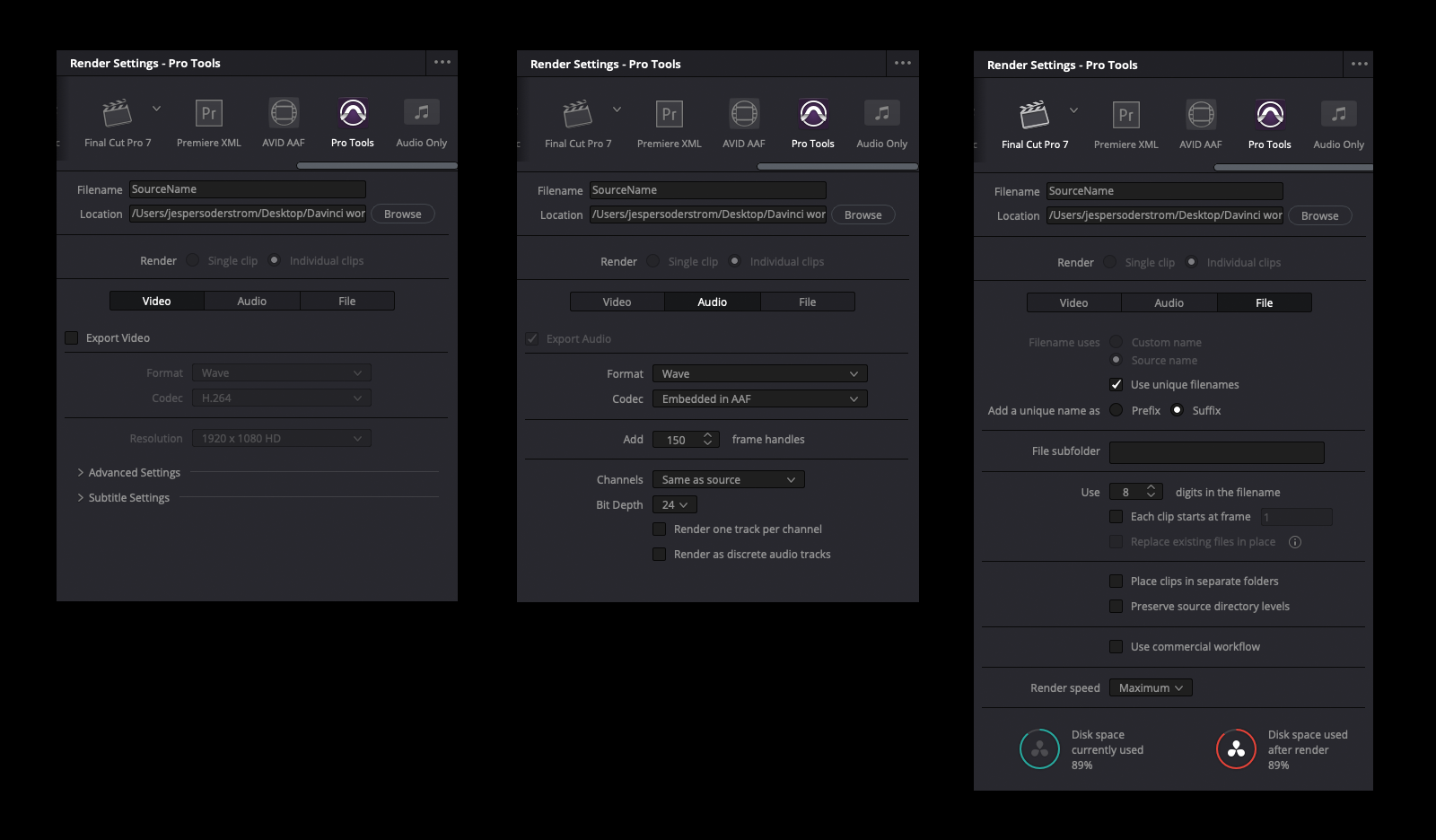
And this is an example of this workflow:

Import the embedded AAF file in Logic. File -> Import -> AAF…
What you can do, what you cannot do and how it seems to work and not work:
– Muting an audio track in Resolve does nothing for Logic. However, if you are muting a track then stereo region seems to get doubled on top of each other in Logic. Mp3 and mp4 clips will get distorted if you are muting a track. So basically: DO NOT MUTE ANY TRACKS IN RESOLVE. Further testing with another project showed that muting a track actually removed everything from that track from the AAF export. Highly confusing. Well, just don’t mute anything, you can remove everything you don’t need in Logic anyway.
– Muting a clip in Resolve removes the clip from the AFF export.
– Clip volume settings in Resolve (also using keyframes for volume automation) does nothing to the clip volume in Logic. This I think is a good thing.
– A mono clip on a stereo track in Resolve creates doubled mono clips in logic on top of each other, so try to stay organized in Resolve. Mono clips on mono tracks, stereo clips on stereo tracks.
– REMOVE ALL FADES IN RESOLVE. This is very annoying but the fades create huge sync and handle problems. Let’s say you make a 2 sec fade in on clip 5 on track 3. In logic clip 5 will have no fade, and it will be at least 2 sec off sync and all the clips after will also lose sync. Very problematic.
The good stuff
– The audio quality is preserved (24 bit 48k)
– Metadata is preserved
– You get correct handle length (if you do not use fades in Resove!)
– Region placement is correct (if you do not use fades in Resolve!)
The bad stuff
– Regions can get double or even tripled on top of each other. To have the cleanest possible session in Logic, I would remove these and this is time consuming and we all know we don’t have this time in audio post. Try to get the video editor to be very strict and organized about track layout in Resolve. Mono clips on mono tracks, stereo clips on stereo tracks. Absolutely no fades. Use track names.
Media Composer -> Logic Pro X
This one is probably the rarest and I have not tested this. But we can have assumptions based on what we understand with the other NLE’s. Here are 4 tips:
- Export an OMF from and import into Logic. It works with Premiere so it’s a high chance it will work here too. Try with the exact same settings as with Premiere.
- Export an AAF and import into Logic. This will probably not work, but it does not hurt to try.
- Export an AAF, import into Pro Tools or any DAW that works with both Media Composer and Logic, and from there send a new AAF that Logic understands.
- Export an AAF and import into DaVinci Resolve. From there export an XML with the proper Final Cut Pro X rendering settings as I wrote about earlier.
If everything else fails – Stem export
The classical stem export is simple and can even be the best option for really simple stuff because of its simplicity, and you can and should always check sync by ear and eye anyway.
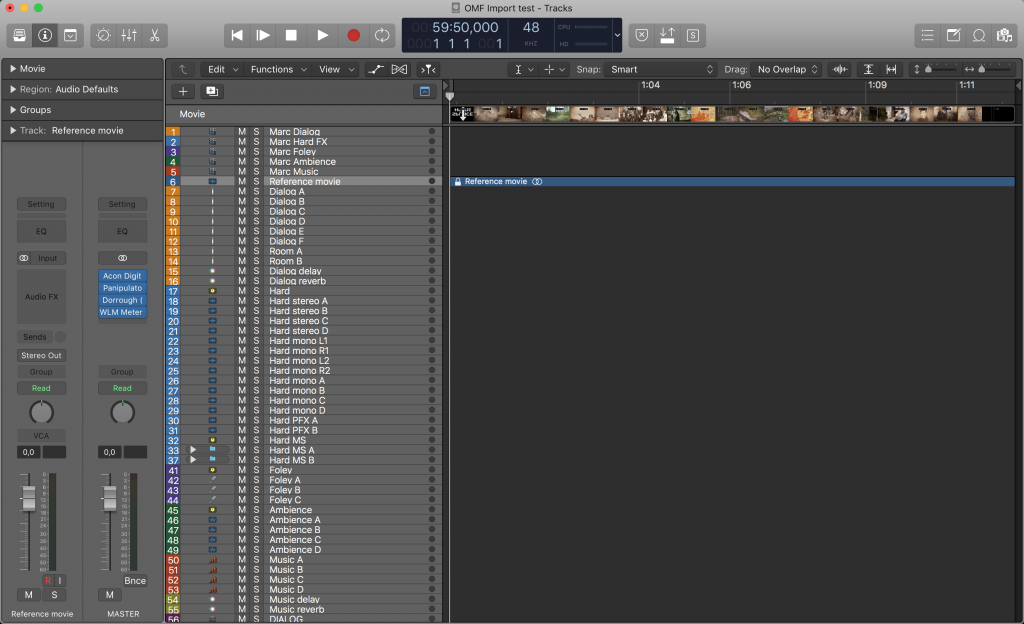
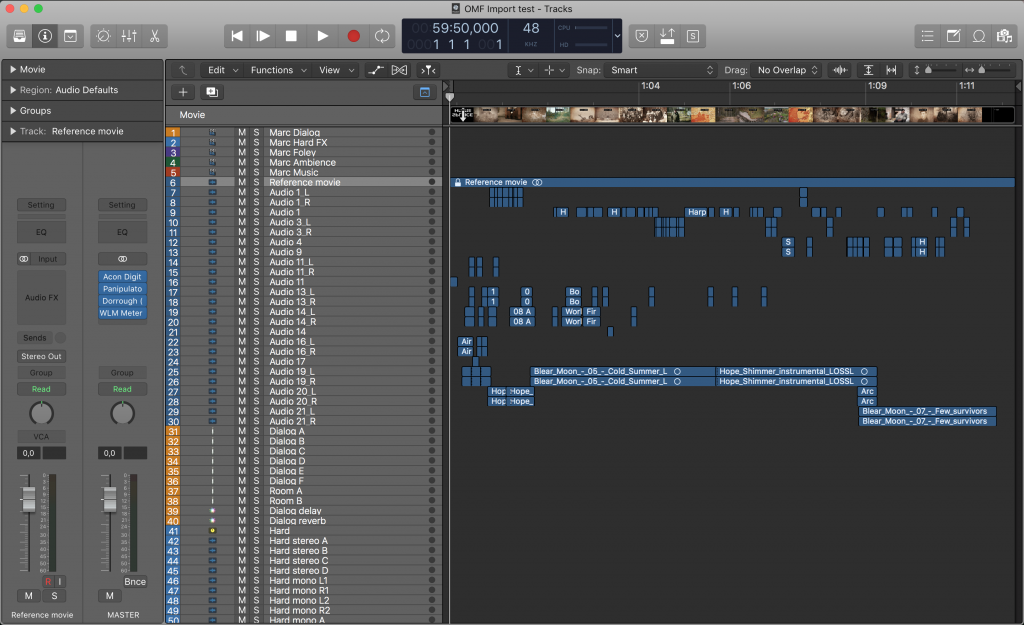



16 Responses
Hi, I do sound for ads and video productions using Logic Pro x since forever and I get mostly AAF from premiere. I open the AAF in protools and I do stems but for film or more complex movies I use pro tools as a middle man to export a new AFF I can open in logic.
The settings I use are “Export as: AAF”, uncheck “Enforce Media Composer Compatibility”, uncheck “Quantize Edits to Frame Boundaries”, no SRC, Wav, 24bit, “copy from source media”, “Handle Size 0”.
The good: correct synced files, volume automation.
The bad: Crossfades/fades are rendered as new audio files, stereo tracks slit to two mono audio files in mono tracks, clip gains aren’t transferred to logic, it take forever for logic to initially open the AAF(it takes something like 1min for every minute of the project)
Do you have any suggestions or insights to improve this?
Many thanks!
Hi, thanks for the comment. I cannot really help you with that one. I’ve had problems with the fades as well from Davinci (AAF Pro Tools export) to Logic where the fades did not translate and put all the clips out of sync. This is why I now use Nuendo (version 13 just released) because although Logic is great for music production mixing and I really like the automation, importing and editing can be a nightmare for audio post. It takes too much time and it lacks features, but for small projects it still works great of course, as long as you get the aaf imported that is.
I got a Adobe premiere pro file from a client, everything is in its place but there is no fade-in/out-information nor volume-information. Is this normal behaviour? It would be nice if I had the client’s mix to begin with so I don’t have to go through each track to match their reference track. If so, is there a workaround?
Hi, I think fades and automation is not transfered over in an OMF, for this to happen you need AAF but fades can sometimes be problematic. I’ve lost region sync thanks to fades in Davinci Resolve.
Hello guys im on LOGIC 10.7.3 and can import a OMF . Any Ideas?
I Already tried the Import Other option
You’ve saved me a ton of pain with the OMF-not-AAF tip, Jesper – many thanks!
This def made my life smooth for importing an OMF into Logic from Premiere, however, I HATE that it splits stereo tracks into two mono tracks and duplicates the mono tracks – For example – a stereo music track gets split into two mono tracks, two mono dialogue tracks (boom, lav) get split into 4 mono dialogue tracks. Where I struggle, and maybe you can offer a solution, is that I can delete 2 of those mono dialogue tracks to clean up the timeline. BUT if I hard pan L and R the split stereo track and bounce to a new stereo file, it still sounds like it’s mono.
Would it be better to have the editor change the settings in Premiere instead of what you mention in this article? Hope this makes sense~
Hi! Yes it is annoying to get 2 mono tracks from a stereo source in Premiere. In Pro tools you can drag and drop 2 mono files into a stereo track and the clip will automatically become a consolidated stereo file, and the other way (stereo file back to 2 mono, great for dealing with mid-side recordings) without any extra bouncing, Pro Tools has great features for audio post and is still an industry standard.
Make sure your new bounced stereo file is actually put on a stereo track and not put on a new mono track, and you have to pan the regions hard left and hard right before mixdown of the mono regions.
https://www.jespersoderstrom.com/logic-pro-audio-post/dual-mono-to-interleaved-stereo/
I have not worked with Premiere for a while, might be AAF might work in the future with Logic, as happened with Davinci Resolve version 17. Just do some testing before starting on the big thing.
Thanks for the reply!
Yes, I made sure to put the newly bounced stereo file onto a stereo track and when I bounced the entire mix to check on other test sources – TV, Ipad, etc (web mix), it sounded really choked and like everything was in mono. When I took the separate stereo music file that wasn’t part of the OMF and used that instead, it was perfect.
AAF into Logic, I usually have the same experience as you. I was reading somewhere else that AAF DOES work with Logic if you just right click on the AAF and then choose, “open with Logic”. Everything should import correctly as opposed to choosing “import” while Logic is already open. A theory I have yet to try.
I’m freelance and mainly work on short films, web material, and podcasts….but you’re right, it might be time to make an investment into Pro Tools and just learn that as it’s an industry standard and has more film-friendly features than Logic.
Another great alternative is Steinberg Nuendo. Nuendo 12 is on the way.
Hey there, thank you! I use Davinci and just finished editing my 30 min short film. I tried everything. AAF doesn’t work in Logic (Your method gives me one single render of the master output), other methods I have found are buggy, audios are missing or completely drifted to the point where it would take days to fix. I exported the Davinci File to Premiere Pro and tried both AAF and OFT files from there. OFT worked but for some reason the audios are pitched down (and maybe slower?). It also didnt ask me to change the sample rate from 41000 to 48000 upon import. I don’t know how else to do it manually. The AFF file would probably work but I would have to relink all the files. unfortunately we used the automatic synch function to synchronise Boom and Camera audio. Any ideas?
Hi! What version of Logic and what version of Davinci? Logic 10.6.3 and Davinci Resolve 17.3.1 is the current newest versions. Maybe something is wrong in the Davinci timeline? For rinstance I think you cannot have muted tracks. The export to Pro Tools preset should work.
If it still does not work, you can try exporting to Premiere in XML format and have your premiere timeline in 44.1k (if your session is in 44.1? 48k is standard for film) and export OMF from premiere in 44.1k. You can resample your final mix / print master into 48k.
Hope something works. There should be a standard way of doing this that all manufacturers follow.
HiJ,
Thx for this info…
Quick Q…. when importing an MXL into logic x the polywavefile will only play in surround mode..
Is there a way to seperate them into 6 mono files?
Many thanks in advance.
BW
Hi there. Still having issues with the omf import from Adobe Premier Pro. When I imported it into Logic about half the files are missing.
Strange, it has always worked for me. I am using Logic Pro X 10.4.8. The error is probably in the Premiere export.